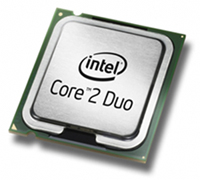|
Overclocking Pros and Cons
 |
Introduction
With all the latest PC video games and video design applications, comes a toll. Video game enthusiasts are always looking out for the next greatest title on the PC. Unfortunately, the demand in computer hardware resources that these video games generate is astronomical. A good portion of the PC gamers are now placed in a dilemma - they must have a relatively new computer in order to run the latest video games. A large portion of the gaming community has computers that meet the minimal game requirements, but want to run the game a little smoother. For these individuals, overclocking may be a solution. Overclocking a computer component is when you increase the speed of the given component beyond its safe, standardized speed, which is specified and tested by the manufacturer for that component. PC game enthusiasts usually overclock the video card, CPU, and memory. This is because they are the three primary computer resources that affect performance for video games. Overclocking does not necessarily have to be directed towards PC game enthusiasts alone. It may be implemented in any computer, by any user.
Research is key
Before you begin overclocking your system, there are a few key points of interest you need to cover. The main concern you must attend to, when overclocking a system, is hardware temperature. More often then not, people tend to fry out a piece of hardware when overclocking because they increase the clock speeds too drastically from the start. Overclocking is a slow and gradual process, even from the start. Take the time to slowly increase your clock speeds and keep an eye on your hardware temperatures. I recommend using nTune, from nVidia, to keep a close eye on your hardware temperatures, or CoreTemp.
nTune also has a system stability test tool, where a series of time consuming and intense resource stress tests are run on your system to determine if your system is currently stable at the specified clock speeds. Another tool for system stress tests you could try is Prime95 or Orthos.
Now we have our tools to monitor our hardware and perform overclocking, but you are probably asking about a safe temperature level for your hardware. There is no absolute temperature value for a piece of hardware you wish to overclock. The temperature limits all depend on the type of material the hardware was constructed with, as well as how the hardware was engineered. Safe temperature levels, as well as many other questions, may be answered on the popular overclocking site overclock.net. I found this site to be perfect to suit any overlocker's needs. The site has reviews, as well as intense forum discussions about overclocking any hardware, for any given build. Personally, I prefer my cpu temperature to stay below 55 degrees Celsius. In most cases, if you have the average fan cooled system, your cpu temperature should never reach 60 degrees(celsius) or above. Don't rely on my temperature estimates alone: please consult other resources like overclock.net and ask somebody with the same hardware manufacturer and model number as you have.





